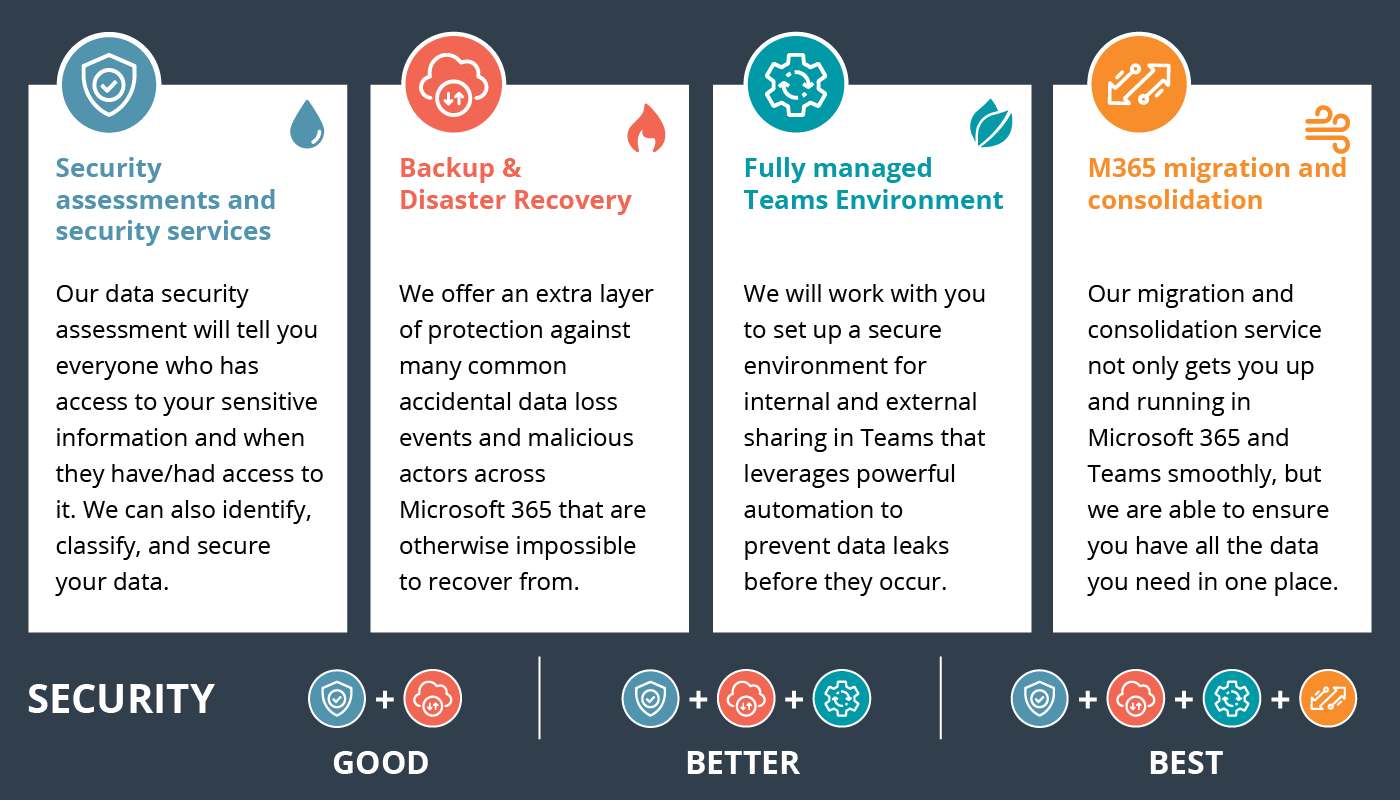Security Insights

Over the past year, as remote work has become more commonplace, so have cloud-based products that enable streamlined collaboration such as Microsoft 365 and Microsoft Teams. These cloud tools are making it easier than ever for teams to work together effectively, but as the data we create grows, so does the need for solutions that simplify the ability to sift through, manage, and protect it.
It can take a massive amount of time to manually manage all the security parameters needed to protect collaborative data. This time-consuming, complex task is even more complicated for anyone that is in the process of digitally transforming their workspaces. Thankfully, we can help!
Security Assessment
Virtually every organization has sensitive data they need to collaborate on. Examples include contracts, personal employee/customer data, and credit card information. This can be exposed during daily collaboration through sharing links, Teams memberships, and various other means. Our data security assessment will tell you everyone who has access to your sensitive information and when they have/had access to it. With our security services, we can also identify, classify, and secure your data.
Backup and Disaster Recovery
If your team inadvertently deletes an item in Microsoft Teams, Dynamics 365, Salesforce, or Google Workspace, you’ll be glad you spoke with us about this service. 55 percent of SMBs were hit with ransomware attacks in 2020 alone. We offer an extra layer of protection against many common accidental data loss events and malicious actors across your collaboration systems that are otherwise impossible to recover from.
Secured Microsoft Teams Environment
The fast-paced nature of collaboration and the ubiquity of sharing options in Microsoft 365 means mitigating the risk of data exposure is an ongoing concern. We will work with you to set up a secure environment for internal and external sharing in Teams that leverages powerful automation to prevent data leaks before they occur.
Microsoft 365 Migration and Consolidation
We are strong proponents of consolidating data and collaboration into Microsoft 365 and Teams. Having data in multiple systems such as Dropbox, Box, Google Workspace (G Suite, Gmail) or file servers increases the risk of exposure or loss. It’s also a pain for you to keep switching between platforms depending on what you need! Our migration and consolidation service not only gets you up and running in Microsoft 365 and Teams smoothly, but we are able to ensure you have all the data you need in one place.




